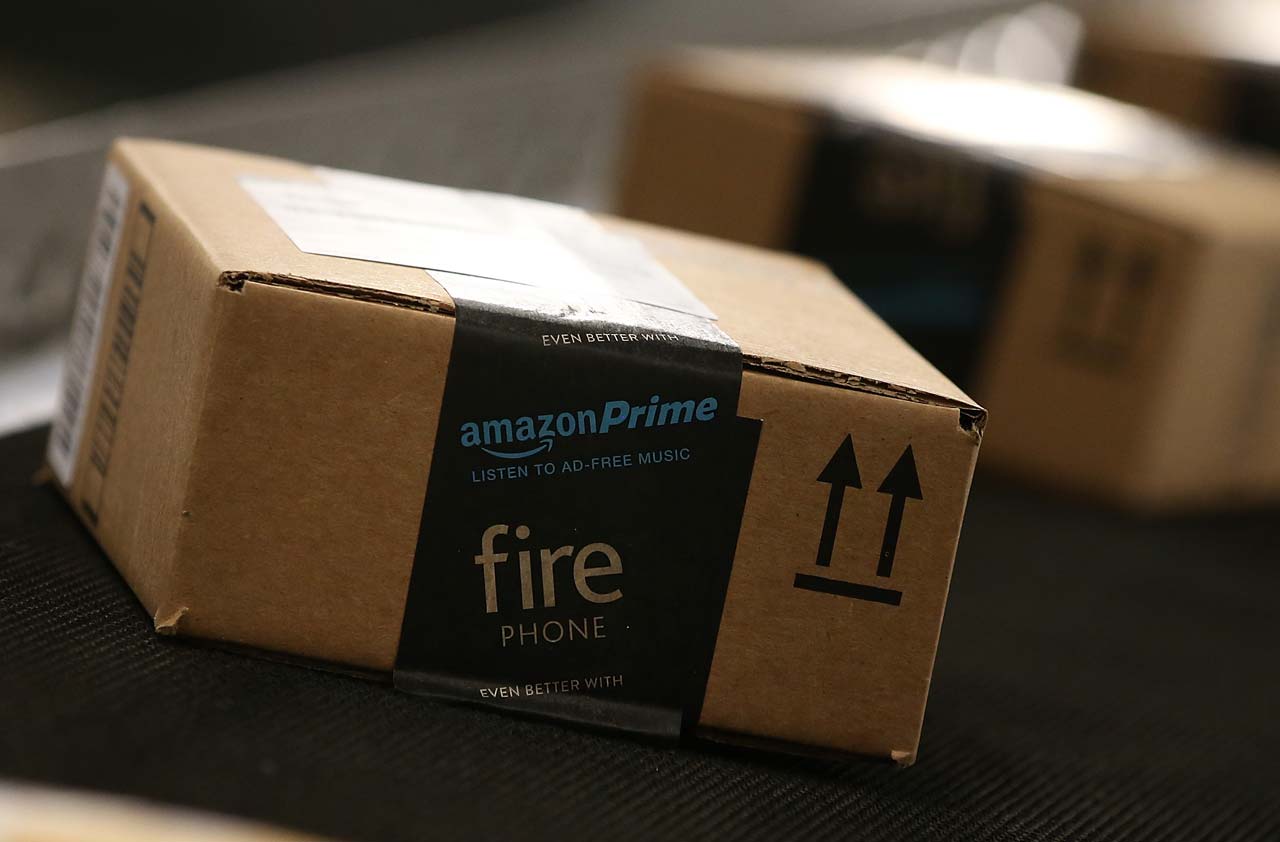4 Ways to Trim Your Spending
Our step-by-step money diet will fatten your wallet.
In some ways, a budget is like a diet. You may hate sticking to it, but you feel great after you do. Unlike a diet, however, a budget doesn’t have to leave you hungry. In fact, with the right moves, you can improve your household finances and still splurge on a few goodies here and there.
If your spending is out of control-or even if you’re comfortable but you feel insecure about your job and the economic outlook-January is a good time to scrutinize your finances. Odds are, you’ll be able to save more than you thought.
To make your budget work, keep it simple: Stay on task and take one step at a time. And don’t think of it as a straitjacket that takes the fun out of life. Rather, consider it a way to control your small expenses now so that you can buy big-ticket items (and reach your goals) in the future.

Sign up for Kiplinger’s Free E-Newsletters
Profit and prosper with the best of expert advice on investing, taxes, retirement, personal finance and more - straight to your e-mail.
Profit and prosper with the best of expert advice - straight to your e-mail.
1. Track your spending.
It’s the only way to get a handle on how much money flies out of your wallet. Ideally, you need to keep tabs for at least a month, and charting your expenses for three to six months will let you capture bills that don’t come up each month, such as car insurance, doctor visits and household repairs. But even monitoring spending for a couple of weeks is a start, and it needn‘t be painful. Simply eyeballing credit-card and bank statements is a beginning.
But you also need to know where the cash goes. The old-fashioned approach of putting pen to paper works just fine, but you also have plenty of high-tech options: a personalized Excel spreadsheet, the free budget worksheet at Kiplinger.com, and online budgeting sites such as Wesabe.com and Mint.com. (You’ll need to provide user names and passwords for your online accounts to enable your transactions to be downloaded, but the sites are privacy-protected.) You could also use Quicken (http://quicken.intuit.com; free online or $60 for the Deluxe software version) or YNAB, which stands for You Need a Budget (www.youneedabudget.com; $50 for the software).
No matter which method you choose, don’t overlook your smaller purchases. Those tall lattes at Starbucks can really add up.
Christine Owens, a 45-year-old single mother of four, started using the online-budgeting site Mint.com because she wanted to rein in her spending. As a result, Owens, a Southern California real estate agent, has cut her expenses by more than $1,000 a month and says she hasn’t suffered at all. Owens saved $600 a month on groceries by planning her meals and buying food at discount stores. She lopped off $350 a month by consolidating her family’s cell-phone accounts and cutting out her land line. She even saved by switching to a slower Internet service. Their spending excess “was a rude awakening for me and the kids,” she says. “We ignored all the little stuff, but it was the little stuff that added up.”
2. Look for leaks.
Start with variable expenses. If you’re spending too much on eating out at restaurants, cut out one restaurant meal a week. Or grab a takeout meal instead of table service, or pack your lunch. That could save you more than $100 a month. Perhaps, like Owens, you have multiple cell-phone plans that can be streamlined. Or maybe you’ve had the same cable plan for a while. Competition in the cable industry has picked up, so it’s a good time to ask for a deal or switch to another provider altogether (for more savings tips, go to Feedthe-pig.org, sponsored by the American Institute of Certified Public Accountants). “The time to cut expenses is before the crisis,” says Sharon Rich, founder of Womoney, a financial-planning firm in Belmont, Mass.
As you get your finances in order, use your newfound savings to pay down debt, starting with balances that carry the highest interest rate (clearing the books by paying off smaller balances works, too). If you’ve had the same credit card for a while and want to see if you can snag a better deal, check a credit-card comparison site, such as LowCards.com, BillShrink.com or CreditCards.com. Credit unions and community banks tend to offer friendlier terms than the big national banks. Need outside help managing your payments? See a credit counselor recommended by the National Foundation for Credit Counseling (www.nfcc.org).
3. Set goals.
Once you have a handle on where you’re leaking money, you can set priorities and savings goals and reroute your cash. Ideally, you’ll adhere to the golden rule of budgeting: Pay yourself first. But you also need to avoid borrowing back the money you save to meet expenses.
The more targeted your goals, the more likely you are to achieve them. Put away money specifically for retirement, college or a house-or maybe squirrel away cash to renovate your kitchen. As a Mint user, you can let the program set up your budget by tracking what you actually spend, or you can manually create budgets for categories such as groceries and eating out. A new tool on Mint called “projected savings” can help you see how long it will take to reach your goals. The tool allows you to visualize how tightening your budget a notch will make your savings grow over the next month, quarter or year. One thing you should always do when setting up a budget is put aside money for an emergency. Even when the economy’s firing on all cylinders, you need “just in case” money for an unexpected medical expense, furnace failure or fender bender.
4. Be flexible.
As you start to follow your budget, be sure to give yourself some wiggle room. Budgets are meant to be flexible. If you restrict yourself too much, you may get so frustrated that you splurge on a big impulse buy-the dieter’s equivalent of cheating with a banana split. Jean Keener, a financial planner in Keller, Tex., notes that most people can afford to have one area that qualifies as a luxury, such as a nice home. Indulge in too many luxuries, however, and you’ll burn through too much money.
The good news is that most people overspend in just two or three areas. Suzannah Garrison, a 42-year-old single mom, started using Mint.com after her investments lost 40% in the bear market. Once Garrison analyzed her outlays, she was surprised to find that she was spending much more than she realized on household items-including home-cleaning services, repairs and furniture-as well as on eating out and on her dogs. Garrison cut back what she spends on her home-from $2,500 a month to less than $1,000. She also reduced her dining-out budget by a third, to $400 a month. When she travels, she now has her mother watch the pooches, which saves the $33-a-night expense of boarding them.
Along the way, Garrison has learned a vital lesson: One big expense doesn’t have to throw you off. When she spent $1,400 on a moped for her 15-year-old son, she cut back on everything else that month so she could stay on track. “Now that I have a handle on my expenses, I’m kind of obsessive about it,” says Garrison, who lives in Fayetteville, Ark. “It’s empowering.”
Now that we think of it, maybe you shouldn’t think of a budget as a diet after all. It’s more like exercise. Any pain you feel will only make you stronger.
Get Kiplinger Today newsletter — free
Profit and prosper with the best of Kiplinger's advice on investing, taxes, retirement, personal finance and much more. Delivered daily. Enter your email in the box and click Sign Me Up.
-
 Tax Day 2025: Don’t Miss These Freebies, Food Deals and Discounts
Tax Day 2025: Don’t Miss These Freebies, Food Deals and DiscountsTax Day You can score some sweet deals on April 15 in some select restaurants like Burger King, Shake Shack, and more.
By Gabriella Cruz-Martínez
-
 Registered Social Security Analyst: The Retirement Professional You Didn’t Know You Needed
Registered Social Security Analyst: The Retirement Professional You Didn’t Know You NeededThe services of a Registered Social Security Analyst (RSSA) are often overlooked. Yet, for those planning for retirement, nearing or already retired, an RSSA can be an invaluable resource.
By Donna LeValley
-
 Roth IRA Contribution Limits for 2025
Roth IRA Contribution Limits for 2025Roth IRAs Roth IRA contribution limits have gone up. Here's what you need to know.
By Jackie Stewart
-
 Four Tips for Renting Out Your Home on Airbnb
Four Tips for Renting Out Your Home on Airbnbreal estate Here's what you should know before listing your home on Airbnb.
By Miriam Cross
-
 Five Ways to a Cheap Last-Minute Vacation
Five Ways to a Cheap Last-Minute VacationTravel It is possible to pull off a cheap last-minute vacation. Here are some tips to make it happen.
By Vaishali Varu
-
 How to Figure Out How Much Life Insurance You Need
How to Figure Out How Much Life Insurance You Needinsurance Instead of relying on rules of thumb, you’re better off taking a systematic approach to figuring your life insurance needs.
By Kimberly Lankford
-
 Five Reasons You Shouldn't Shop on Amazon Prime Day
Five Reasons You Shouldn't Shop on Amazon Prime DaySmart Buying Think twice before getting lured into buying a bunch of stuff you don't need just because it's on sale.
By Andrea Browne Taylor
-
 Amazon Big Deal Days Is Coming! We’ve Got All the Details
Amazon Big Deal Days Is Coming! We’ve Got All the DetailsAmazon Prime To kick off the holiday season with a bang, Amazon Big Deal Days runs Tuesday, October 8 and Wednesday, October 9.
By Bob Niedt
-
 How to Shop for Life Insurance in 3 Easy Steps
How to Shop for Life Insurance in 3 Easy Stepsinsurance Shopping for life insurance? You may be able to estimate how much you need online, but that's just the start of your search.
By Kaitlin Pitsker
-
 Five Ways to Shop for a Low Mortgage Rate
Five Ways to Shop for a Low Mortgage RateBecoming a Homeowner Mortgage rates are high this year, but you can still find an affordable loan with these tips.
By Daniel Bortz